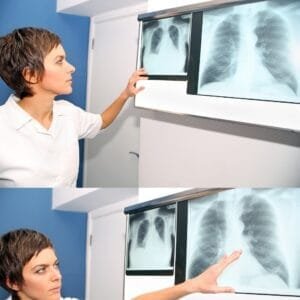Pulmonary Hypertension: Symptoms, Causes, and Treatment
Pulmonary Hypertension (PH) is a chronic condition characterized by high blood pressure in the pulmonary arteries, which carry blood from the heart to the lungs. This elevated pressure forces the heart to work harder, potentially leading to heart failure if left untreated. While rare, PH is a serious condition requiring prompt diagnosis and management to prevent complications.



What is Pulmonary Hypertension?
Pulmonary Hypertension occurs when the arteries in the lungs become narrowed, blocked, or stiffened. This increases the pressure inside these blood vessels, making it harder for the heart to pump blood through them. Over time, the heart’s right ventricle may enlarge and weaken, leading to reduced oxygen supply to the body.
Types of Pulmonary Hypertension
PH is classified into five groups based on its underlying cause:
- Pulmonary Arterial Hypertension (PAH): Caused by narrowing or blockage of the pulmonary arteries.
- PH Due to Left Heart Disease: Associated with heart failure or mitral valve disease.
- PH Due to Lung Disease: Linked to conditions like chronic obstructive pulmonary disease (COPD) or interstitial lung disease.
- PH Due to Chronic Blood Clots: Also called chronic thromboembolic pulmonary hypertension (CTEPH).
- PH with Unclear or Multifactorial Causes: May involve multiple overlapping factors.
Causes of Pulmonary Hypertension
The causes of PH vary depending on its type but may include:
- Genetics: Mutations in certain genes can predispose individuals to PH.
- Heart Conditions: Left-sided heart failure or valve disorders.
- Lung Diseases: COPD, pulmonary fibrosis, or sleep apnea.
- Blood Clots: Chronic blood clots in the lungs restrict blood flow.
- Other Conditions: Autoimmune diseases like lupus or scleroderma.
Symptoms of Pulmonary Hypertension
PH symptoms often develop gradually and may be mistaken for other conditions. Common signs include:
- Shortness of Breath: Especially during physical activity or at rest in advanced cases.
- Fatigue: Persistent tiredness due to reduced oxygen delivery.
- Chest Pain: A feeling of pressure or tightness in the chest.
- Swelling (Edema): In the ankles, legs, or abdomen due to fluid buildup.
- Dizziness or Fainting: Often during physical exertion.
- Bluish Lips or Skin (Cyanosis): Indicating low oxygen levels in the blood.
Complications of Pulmonary Hypertension
Without treatment, PH can lead to severe complications, including:
- Right-Sided Heart Failure: Overworking of the heart’s right ventricle can weaken it.
- Arrhythmias: Irregular heart rhythms, which can be life-threatening.
- Blood Clots: Increased risk of clots in the lungs or legs.
- Bleeding: Ruptured blood vessels in the lungs may cause coughing up blood.
Diagnosis of Pulmonary Hypertension
Early diagnosis is crucial for managing PH. Tests include:
- Echocardiogram: Provides an image of the heart to detect signs of PH.
- Right Heart Catheterization: Measures the pressure in the pulmonary arteries and confirms diagnosis.
- Chest X-ray or CT Scan: Visualizes lung and heart abnormalities.
- Blood Tests: Identify underlying causes like autoimmune disorders.
- Pulmonary Function Tests: Assess lung capacity and airflow.
Treatment Options for Pulmonary Hypertension
While PH has no definitive cure, treatments focus on relieving symptoms, improving quality of life, and slowing disease progression.
Medications
- Vasodilators: Open narrowed blood vessels (e.g., epoprostenol, treprostinil).
- Endothelin Receptor Antagonists: Reduce blood vessel constriction (e.g., bosentan, ambrisentan).
- Phosphodiesterase-5 Inhibitors: Improve blood flow (e.g., sildenafil, tadalafil).
- Anticoagulants: Prevent blood clots (e.g., warfarin).
- Diuretics: Reduce fluid retention and swelling.
Lifestyle Changes
- Avoid High Altitudes: Reduces the strain on the lungs.
- Regular Exercise: Light activities to improve endurance and overall health.
- Quit Smoking: Protects lung and heart function.
- Healthy Diet: Reduces salt intake to manage fluid retention.
Advanced Treatments
- Oxygen Therapy: Helps increase blood oxygen levels.
- Surgical Options:
- Atrial Septostomy: Creates an opening between heart chambers to reduce pressure.
- Lung Transplant: For severe, unresponsive cases of PH.
Preventing Pulmonary Hypertension
While some causes of PH cannot be prevented, lifestyle modifications can reduce the risk:
- Control Underlying Conditions: Manage heart or lung diseases proactively.
- Avoid Smoking: Reduces lung damage and improves cardiovascular health.
- Stay Active: Engage in light exercises to maintain heart and lung strength.
- Prevent Blood Clots: Use blood thinners if prescribed and stay mobile during long periods of inactivity.
- Get Regular Checkups: Especially if you have a family history of PH or related conditions.
FAQs about Pulmonary Hypertension
1. What causes pulmonary hypertension?
Pulmonary hypertension is caused by narrowed or blocked pulmonary arteries, often due to lung or heart diseases, blood clots, or genetic factors.
2. How is pulmonary hypertension diagnosed?
It is diagnosed using echocardiograms, right heart catheterization, and imaging tests like chest X-rays or CT scans.
3. Can pulmonary hypertension be cured?
While there is no cure, medications and lifestyle changes can help manage symptoms and slow progression.
4. What are the early signs of pulmonary hypertension?
Early symptoms include shortness of breath during activity, fatigue, and chest pain.
5. Who is at risk for pulmonary hypertension?
Individuals with lung or heart diseases, a family history of PH, or autoimmune disorders are at higher risk.
Conclusion
Pulmonary Hypertension is a complex and life-altering condition, but with early diagnosis and appropriate treatment, many patients can lead a fulfilling life. Understanding the causes, recognizing symptoms, and making lifestyle adjustments are key to managing PH effectively. Regular monitoring and medical care are essential for improving outcomes and enhancing quality of life.
